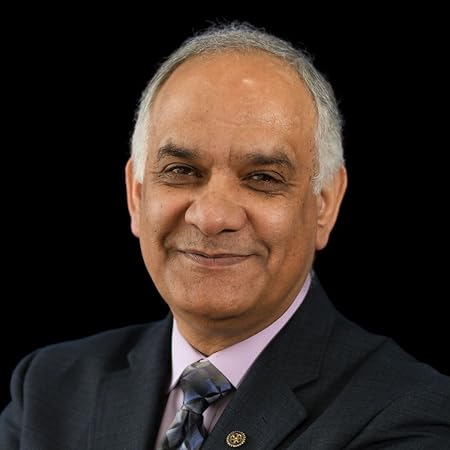When it comes to our personal finances, there’s an old saying: if you find yourself in a deeper and deeper hole, the first step is to stop digging.
Many of our financial problems are self-imposed, and the list of poor fiscal habits is depressingly familiar. We live beyond our means. We fail to save. We spend raises we haven’t received. We take on debt we can’t realistically handle. Then as we get older and retirement is on the horizon, we find ourselves woefully unprepared for a phase of life that can easily last for two or three decades.
Recently we read this article in the New York Times listing five specific money mistakes that can turn retirement into an impossibly elusive dream. Sadly, for those already retired, this advice appears to come a bit late to make an appreciable difference. But if you’re starting to view retirement a decade or two away, now is a great time for some radical self-assessment.
We like this list, because the behavioral change it represents is probably something any of us can attain – especially if the goal of saving for the future seems to crimp our present-day desires for self-gratification. As the article by Lisa Rabasca Roepe suggests, for tomorrow’s dreams to become reality, it’s today’s behaviors and attitudes that need an overhaul.
When Saving for Retirement, Good Intentions are Meaningless
The idea of retirement makes many Americans profoundly fearful. As Roepe writes in her New York Times article, “For many Americans, their 401(k) balance is a sobering reminder that good intentions don’t always lead to good outcomes.” People worry about their future security.
Indeed, as we pointed out in this recent Blog article, the median amount of retirement savings among adults 55-64 is just over $95,000. That means half report savings below that amount – scarcely enough to provide much income to supplement Social Security.
“Perhaps you planned to increase your retirement savings each year,” Roepe writes, “but instead succumbed to immediate gratification and upgraded to a nicer car each time you were promoted. Or you charged family vacations to your credit card but never fully paid them off. Maybe you diligently funded your retirement account, only to borrow from it to pay for costly home repairs because you didn’t have an emergency fund to cover the expenses.” (Any of that sound familiar?)
Most Worry About Retirement, and Some Think It Will Never Happen
The result of our financial habits is predictable, Roepe states. Instead of following the traditional wisdom and accumulating six times your annual salary in retirement savings by age 50, “you have less than $100,000 saved and fewer than 20 years to finance what could be a decades-long retirement.”
But if there’s any consolation in this predicament, it’s that most adults are in a similar bind. “Nearly 60 percent of those who are saving worry that they aren’t putting aside enough money for retirement, according to a 2024 Bankrate study,” says Roepe. “And in a 2024 AARP study, about one-quarter of U.S. adults over the age of 50 who are not yet retired said they would never be able to.”
The U.S. Bureau of Labor Statistics notes that participation in workplace retirement savings plans is far below what it should be. Nearly three-quarters of employees have access to an employer-sponsored retirement plan, but just 56 percent are actively saving.
The Stubborn Lure of Immediate Gratification
So, why are so many of us unable to develop the self-discipline to be more systematic and intentional about saving for the future? While there are likely a host of reasons, both psychological and financial, for millions the answer is simple. We live in a consumeristic society where we’re conditioned to want what we want when we want it.
Naturally this desire too often wins out over planning for a future that seems far off. As a recent Kiplinger article puts it, “Procrastination…can have serious consequences when planning your retirement, something that cannot be put off until the last minute. Instant gratification essentially robs our future selves of financial security, while delayed rewards can lead to better long-term outcomes.”
Writing in the New York Times, reporter Roepe identifies five common habits that sabotage retirement savings, “all stemming from our tendency to choose immediate gratification over future financial security.” She refers to these as “money missteps that can undermine long-term financial health.” Let’s check out her list, and her recommendations.
Money Mistake #1: Increasing Your Spending as Your Income Grows
“As we make more money,” Roepe says, “we tend to spend more money because our perception of our personal wealth changes, and we think we have more than we do.”
For her article, Roepe spoke with financial planner Dana Menard of Maple Grove, Minnesota. “It’s a much harder transition to start saving versus spending more when we get a raise,” Menard said. He advises clients that the only way to avoid what he terms “lifestyle creep” is to plan to either save some of your raise or use it to pay down debt, ideally before any of that “extra money” hits your bank account.
California-based financial planner Ariana Aliksjahbana agrees. “Most of us cannot and should not rely on willpower to instill good financial habits,” she told Roepe. Instead, she suggests setting up your 401(k) contribution to automatically increase 1 or 2 percent annually in anticipation of receiving a raise. Direct deposit is always best, experts say.
Money Mistake #2: Not Tracking the Small Stuff
In her New York Times analysis, Roepe points out that many of us spend far more on “small expenditures” than we care to admit. For example, she writes, “The average consumer spends $118 a month on food delivery and $78 a month at coffee shops, according to a 2023 survey of 1,000 U.S. adults by Empower, a financial services firm.”
The problem is perspective. “When we think about expenses,” she notes, “we often focus on big-ticket items like our rent or mortgage, grocery bills and car and student loan payments, but smaller convenience costs can add up quickly. If you’re looking for ways to save, these minor expenses are a good place to start.”
There Are No Shortcuts to Budget Discipline
When it comes to budgeting, there really are no shortcuts: we need to start with an honest view of current spending.
Melissa Caro, the founder of My Retirement Network, told Roepe that everything goes on the spreadsheet. That includes daily coffee and takeout delivery fees along with major monthly bills like rent or mortgage, insurance and utilities. Don’t overlook streaming subscriptions, cellphone plans, internet services or groceries. Include bills on automatic payment.
“When you see all the numbers on one page, it’s usually when something jumps out at you,” Caro notes. Examples: cellphone plans and streaming fees can often increase over time without our paying attention. When Caro contacted her cell service to challenge an increase, “The provider offered her a new plan that allowed her to save $75 a month, which she used to replenish an emergency fund,” Roepe relates.
Money Mistake #3: Continuing to Use Credit Cards While Carrying a Balance
Credit card debt creates a huge burden for millions, including seniors, as we wrote here on the Blog a few months ago. The problem is that credit card debt tends to grow more and more burdensome, leading cardholders to make only the minimum monthly payment. This creates an ever-deepening hole of debt.
“If you keep paying the minimum, the chances are you’re never going to pay that balance off,” said financial planner Dana Menard. He explained to Roepe that the minimum payment on a credit card “barely covers the interest rate charges,” which average 23 percent or more.
The level of debt is enormous, and growing, Roepe writes. “Total U.S. household credit card balances reached $1.18 trillion at the end of May 2025, according to the Federal Reserve Bank of New York,” she says.
Part of being able to save for retirement involves tackling credit card debt. Some debt counselors advise tackling the card with the highest interest rate first, while others suggest the psychological benefit of paying off the card with the smallest balance first – a strategy often called “a debt snowball.” Either way, the experts all say better credit card habits are essential to long-term financial health.
Money Mistake #4: Failing to Create an Emergency Fund
“Everyone needs an emergency fund, even if you’re living with your parents or renting and don’t have a mortgage,” Roepe writes in the New York Times. “An emergency fund acts as a financial buffer against unexpected job loss, medical bills and car repairs.”
It’s astonishing that so few Americans have access to even a basic emergency fund. Earlier in 2025, this CBS News report noted that 59 percent of Americans don’t have enough savings to cover an unexpected $1,000 emergency expense. “We are essentially a paycheck-to-paycheck nation,” Bankrate Senior Economic Analyst Mark Hamrick stated.
The problem occurs when an expense hits for which we’re unprepared. If it’s a few thousand dollars for a car repair or an appliance replacement, we might tend to reach for the credit card, digging ourselves into a deeper hole.
But as the New York Times article explains, when it comes to larger expenditures, many people treat their 401(k) account as if it were a source of emergency funds. Several news sources have reported that withdrawals from retirement accounts are on the rise as people face financial pressure. These withdrawals not only trigger penalties and a tax hit, but loss of savings also leaves account-holders even less-prepared for retirement than they were before.
Money Mistake #5: Spending Windfalls and Other Unexpected Income
Roepe writes in her article that one of the quickest ways to build up an emergency fund or to pay down debt is with a bonus or a tax refund. However, the urge to splurge is never far away.
Instead, advisers suggest taking time to plan what you’ll do with any lump-sum amount that may come your way. Financial planner Alisjahbana recommends that you make a “windfall plan” at the start of the year to document what specific percentages you’ll use for debt reduction, emergency savings and possibly a small splurge. She advises that “having a written strategy in place before receiving any unexpected money prevents impulsive decisions and holds you accountable to your long-term financial goals,” Roepe says.
What if that tax return, workplace bonus, court settlement, or generous gift comes and you don’t have a plan? Alisjahbana advises her clients to bank the money and wait at least 30 days before deciding how to use it. “Having time to think through and weigh your needs versus your wants will likely increase your odds of doing the right thing,” she told the New York Times.
Rajiv Nagaich – Your Retirement Planning Coach and Guide
The long-awaited book by Rajiv Nagaich, called Your Retirement: Dream or Disaster, has been released and is now available to the public. Retirement: Dream or Disaster joins Rajiv’s ground-breaking DVD series and workbook, Master Your Future, as a powerful planning tool in your retirement toolbox. As a friend of AgingOptions, we know you’ll want to get your copy and spread the word.
You’ve heard Rajiv say it repeatedly: 70 percent of retirement plans will fail. If you know someone whose retirement turned into a nightmare when they were forced into a nursing home, went broke paying for care, or became a burden to their families – and you want to make sure it doesn’t happen to you – then this book is must-read.
Through stories, examples, and personal insights, Rajiv takes us along on his journey of expanding awareness about a problem that few are willing to talk about, yet it’s one that results in millions of Americans sleepwalking their way into their worst nightmares about aging. Rajiv lays bare the shortcomings of traditional retirement planning advice, exposes the biases many professionals have about what is best for older adults, and much more.
Rajiv then offers a solution: LifePlanning, his groundbreaking approach to retirement planning. Rajiv explains the essential planning steps and, most importantly, how to develop the framework for these elements to work in concert toward your most deeply held retirement goals.
Your retirement can be the exciting and fulfilling life you’ve always wanted it to be. Start by reading and sharing Rajiv’s important message. And remember, Age On, everyone!
(originally reported at www.nytimes.com)


